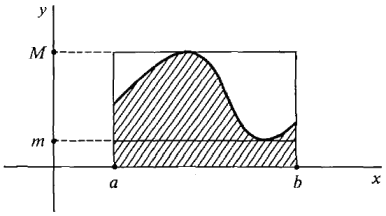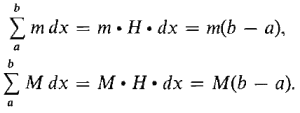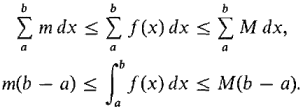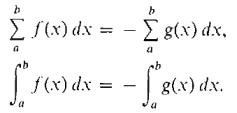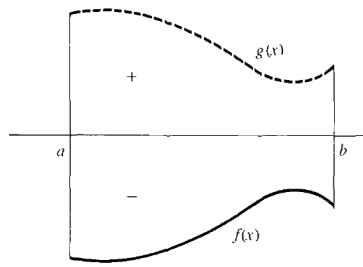| The ebook Elementary Calculus is based on material originally written by H.J. Keisler. For more information please read the copyright pages. |

|

Home  Integral Integral  Theorems of Calculus Theorems of Calculus  Theorem 2: The Rectangle Property Theorem 2: The Rectangle Property |
|






|
|
Theorem 2: The Rectangle Property
THEOREM 2 (The Rectangle Property) Suppose f is continuous and has minimum value m and maximum value M on a closed interval [a, b]. Then
That is, the area of the region under the curve is between the area of the rectangle whose height is the minimum value of f and the area of the rectangle whose height is the maximum value of f in the interval [a, b]. The Extreme Value Theorem is needed to show that the minimum value m and maximum value M exist. The rectangle of height m is called the inscribed rectangle of the region, and the rectangle of height M is called the circumscribed rectangle. From Figure 4.2.3, we see that the inscribed rectangle is a subset of the region under the curve, which is in turn a subset of the circumscribed rectangle. The Rectangle Property says that the area of the region is between the areas of the inscribed and circumscribed rectangles.
Figure 4.2.3: The Rectangle Property PROOF By Theorem 1, any positive infinitesimal may be chosen for dx. Let us choose a positive infinite hyperinteger H and let dx = (b-a)/H. Then dx evenly divides b-a; that is, the interval [a, b] is divided into H subintervals of exactly the same length dx. Then
For each x, we have m ≤ f (x) ≤ M. Adding up and taking standard parts, we obtain the required formula.
One useful consequence of the Rectangle Property is that the integral of a positive function is positive and the integral of a negative function is negative:
The definite integral of a negative function f(x) = -g(x) from a to b is just the negative of the area of the region above the curve and below the x axis. This is because f(x)dx = -g(x)dx,
(See Figure 4.2.4.)
Figure 4.2.4
|
|
Home  Integral Integral  Theorems of Calculus Theorems of Calculus  Theorem 2: The Rectangle Property Theorem 2: The Rectangle Property |
|
Last Update: 2006-11-05



